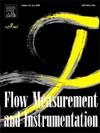基于改进尖峰残差网络的油气管道泄漏故障诊断
IF 2.3
3区 工程技术
Q2 ENGINEERING, MECHANICAL
引用次数: 0
摘要
油气管道的安全运行对于维护国家能源安全至关重要。因此,实施高效的管道泄漏检测是确保管道安全稳定运行的重要环节。本文提出了一种基于改进型尖峰残差网络的管道泄漏检测方法。首先,提出一种编码方法,将原始信号编码为尖峰序列。输入的油气管道信号通过短时傅立叶变换结合空间门控机制和 LIF 神经元进行编码。其次,引入小波卷积来改进原始的尖峰残差网络。最后,利用改进后的尖峰残差网络对编码后的管道信号进行分类。实验结果表明,本文提出的模型在原始信号数据上的分类准确率达到 100%,在加入 5 dB 高斯白噪声后的分类准确率达到 95.62%,有效说明了该方法具有较高的准确率和较强的鲁棒性,能有效提高油气管道泄漏检测效果。本文章由计算机程序翻译,如有差异,请以英文原文为准。
Leakage fault diagnosis of oil and gas pipelines based on improved spiking residual network
The safe operation of oil and gas pipelines is of vital importance for maintaining national energy security. Therefore, the implementation of efficient pipeline leakage detection is an important link to ensure the safe and stable operation of pipelines. In this paper, a pipeline leakage detection method based on an improved spiking residual network is proposed. First, a coding method is proposed to encode the original signal into a spiking sequence. The input oil and gas pipeline signals are encoded using short-time Fourier transform combined with spatial gating mechanism and LIF neurons. Second, wavelet convolution was introduced to improve the original spiking residual network. Finally, the improved spiking residual network is used to classify the pipeline signals after the coding process. The experimental results show that the classification accuracy of the model proposed in this paper reaches 100 % on the original signal data, and 95.62 % with the addition of 5 dB Gaussian white noise, which effectively shows that the method has high accuracy and strong robustness, and can effectively improve the oil and gas pipeline leakage detection effect.
求助全文
通过发布文献求助,成功后即可免费获取论文全文。
去求助
来源期刊

Flow Measurement and Instrumentation
工程技术-工程:机械
CiteScore
4.30
自引率
13.60%
发文量
123
审稿时长
6 months
期刊介绍:
Flow Measurement and Instrumentation is dedicated to disseminating the latest research results on all aspects of flow measurement, in both closed conduits and open channels. The design of flow measurement systems involves a wide variety of multidisciplinary activities including modelling the flow sensor, the fluid flow and the sensor/fluid interactions through the use of computation techniques; the development of advanced transducer systems and their associated signal processing and the laboratory and field assessment of the overall system under ideal and disturbed conditions.
FMI is the essential forum for critical information exchange, and contributions are particularly encouraged in the following areas of interest:
Modelling: the application of mathematical and computational modelling to the interaction of fluid dynamics with flowmeters, including flowmeter behaviour, improved flowmeter design and installation problems. Application of CAD/CAE techniques to flowmeter modelling are eligible.
Design and development: the detailed design of the flowmeter head and/or signal processing aspects of novel flowmeters. Emphasis is given to papers identifying new sensor configurations, multisensor flow measurement systems, non-intrusive flow metering techniques and the application of microelectronic techniques in smart or intelligent systems.
Calibration techniques: including descriptions of new or existing calibration facilities and techniques, calibration data from different flowmeter types, and calibration intercomparison data from different laboratories.
Installation effect data: dealing with the effects of non-ideal flow conditions on flowmeters. Papers combining a theoretical understanding of flowmeter behaviour with experimental work are particularly welcome.
 求助内容:
求助内容: 应助结果提醒方式:
应助结果提醒方式:


